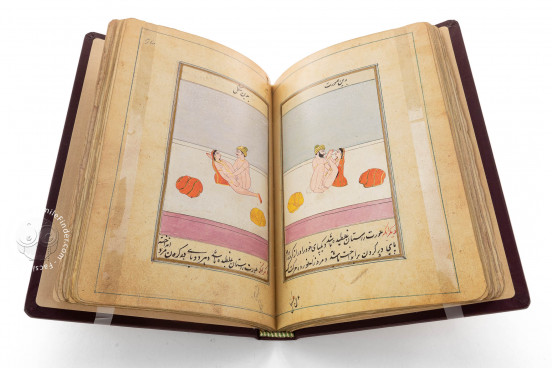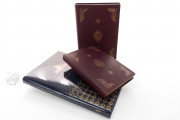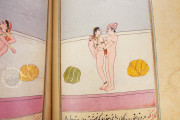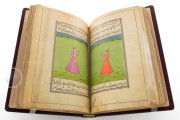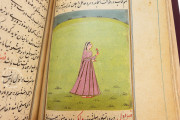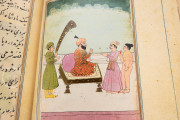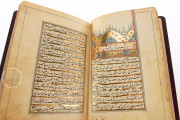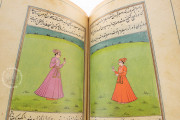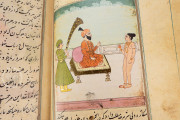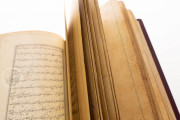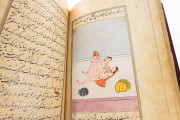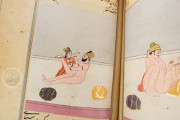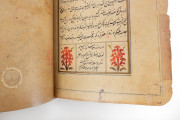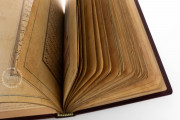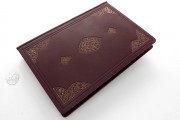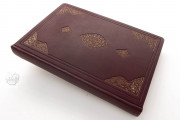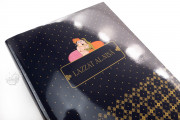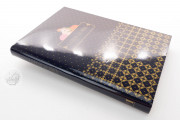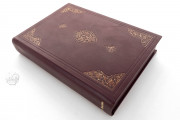The Pleasure of Women, or Nazzat al-nisā, is a guide for men in finding suitable partners and undertaking sexual encounters with women. Although women's sexual fulfillment is discussed, the text was meant to guide men in dominating women. Created in India at the end of the eighteenth or the beginning of the nineteenth century, the manuscript is an example of calligraphy and miniature painting in the tradition of the Mughal Empire. The book features fifty-one delicately painted miniatures illustrating stories, depictions of various types of women, and a breathtaking variety of positions for conducting sexual intercourse.
The text is a fourteenth-century Persian adaptation of material found in the Kokasāstra (Kokkoka's Manual), a Sanskrit text of the eleventh or twelfth century. Its prologue tells the story of how Kokkoka (Koka Pandit), identified as a wise advisor to a king with 1,700 women in his harem, came to write his manual.
A Late Example of Illumination in the Mughal Tradition
Although the manuscript dates from a time when Mughal power was waning, it is a product of the centuries-old artistic tradition of the empire. Its miniatures reveal the classic Mughal fusion of the jewel-like colors of Indian painting with the high point-of-view and careful attention to surface detail characteristic of Persian art. The painting is refined, and the figures have a static and two-dimensional quality, even in illustrations of contorted sexual positions.
The book's thirteen chapters are unevenly illustrated, with the vast majority of the miniatures appearing in the chapter on positions for sexual congress. In that chapter, large miniatures occupy most of each page for thirty-five consecutive pages (fols. 49v-66v). In each miniature, the partners' brightly colored discarded clothes are depicted on either side of the couple, who always retain their headdresses. Although only the outlines of their bodies are drawn, their faces and headgear are painted in fine detail.
An Eclectic Text
The Persian text of the Pleasure of Women has been attributed to Z̤iyāʼ al-Dīn Nakhshabī (d. 1350), the author of the series of adventure stories known as the Tales of a Parrot. In the Paris manuscript of the Pleasure, the text is presented in thirteen chapters, with the beginning of each new chapter (and some subsections) written in red ink. Although primarily a sex manual coupled with a pharmaceutical text, the early portions of the text feature poems, stories, and aphorisms. The last chapter, which is the longest of the book (fols. 68r-100v), is devoted to recipes for potions to enhance or prolong the sexual experience, some for ingestion and others for topical application.
Elegant Presentation
The manuscript's pages feature frame ruling in blue ink and gold, and the text is written in Nasta'liq, the customary script for fine manuscripts of Persian literature. The opening page boasts a painted headpiece of fictive overlapping arches that frames the opening invocation to Allah. Two portions of text are presented as tables (fols. 23v and 25r); each box naming a particular body part to be kissed or touched on each day of a thirty-day month.
A Contemporary Indian Binding
The binding of brown leather blind-stamped with floral motifs is probably original. The book came to the Bibliothèque nationale (now Bibliothèque nationale de France) from the library of the Société d'Anthropologie de Paris, formed mostly from member donations.
We have 1 facsimile edition of the manuscript "Pleasure of Women": Lazzat al-nisâ (El placer de las mujeres) facsimile edition, published by M. Moleiro Editor, 2014
Request Info / Price
